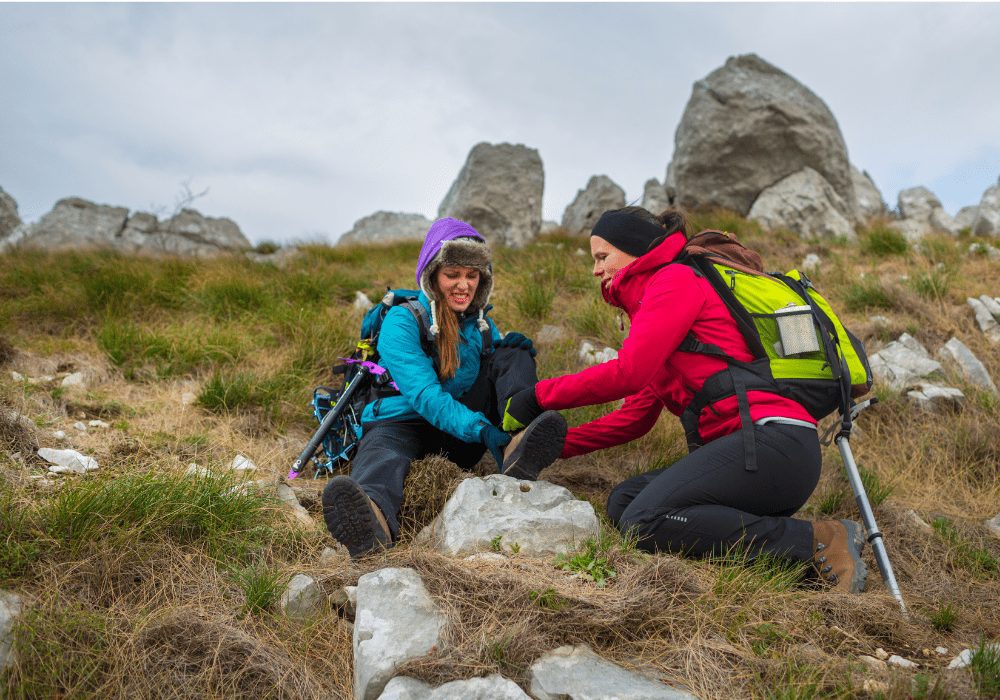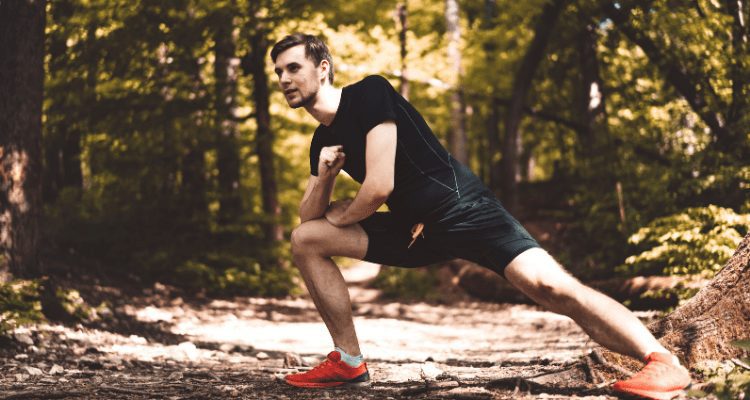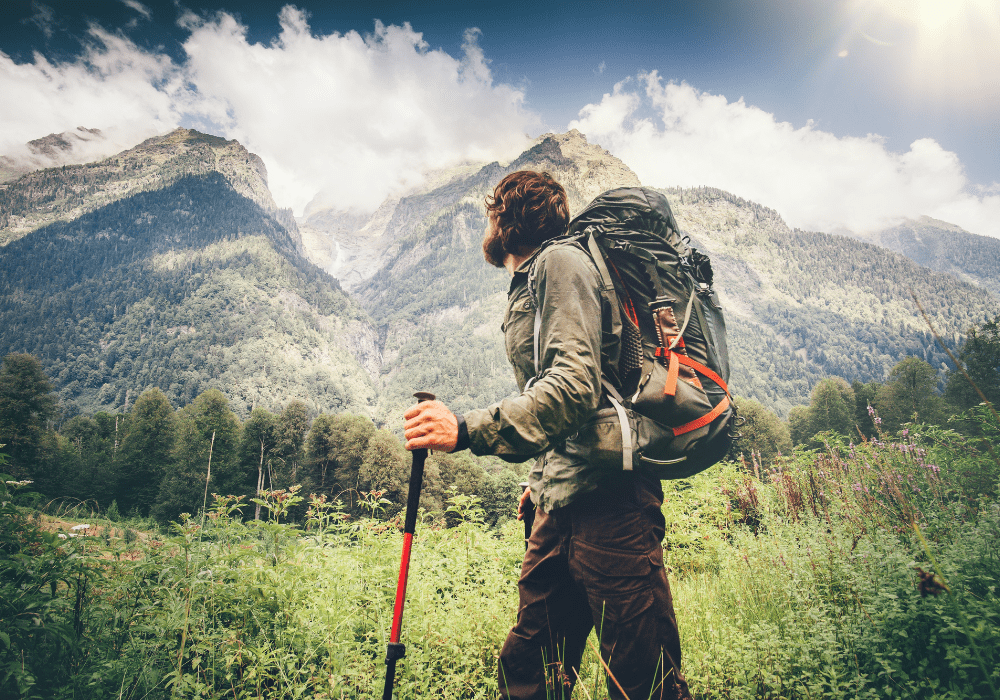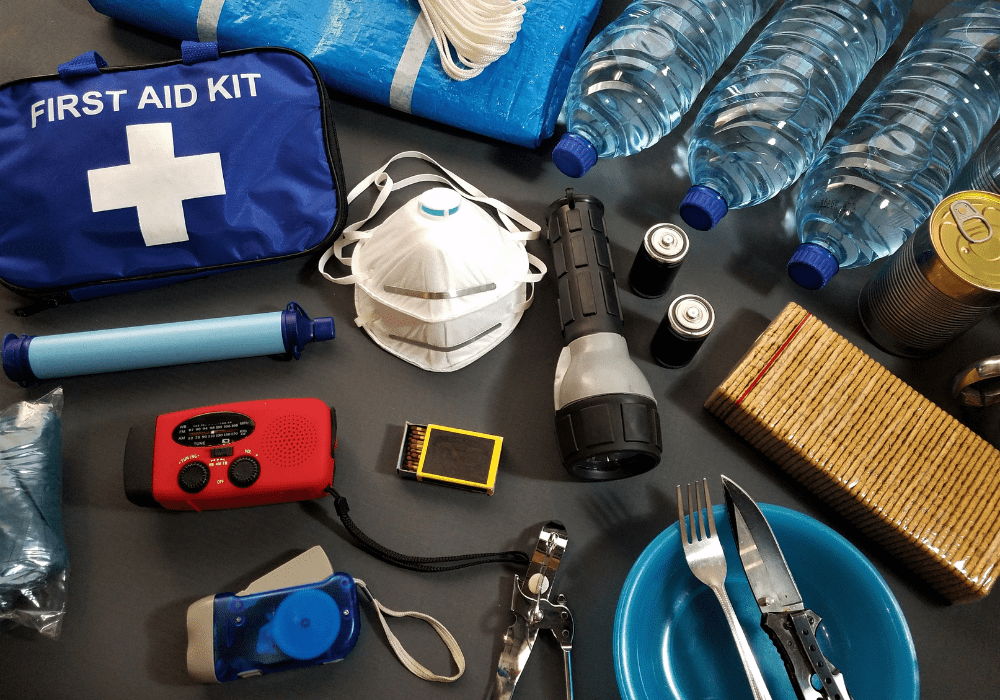
7 Ways To Treat Common Long-Trail Aches & Pains
Estimated reading time: 6 minutes
Hiking is a great pastime.
You get to exercise, experience the sights and sounds which tunes you into the moment, and learn to appreciate nature all at the same time.
However:
It’s not all sunshine and rainbows.
There will be times when you experience aches and pains, especially on long trails.
A strain here, a sprain there, a sneezing fit followed by a runny nose and trouble breathing, nausea, and vomiting.
These are just some of the most common aches and pains you may have to endure while out on your hike.
If you’re new to hiking, here are 18 ways to get into to hiking – all your questions answered.
Table of Contents
Identify and Treat Common Aches and Pains
Below I’ve listed the 7 most common aches and pains while out on long trails.
Read through all of them so you know what to do in case you or a companion gets unlucky out on a hike.
1. Strains: Muscles

Strains affect your muscles. There’s going to be a pain, swelling, and restricted range of motion.
Unfortunately, you may need to end your trip immediately as this injury takes a long time to heal.
To prevent this injury, warm-up, and stretch before your hike.
Keep warm and don’t overexert yourself. Also, be sure to keep yourself fit.
To alleviate the pain while out on the trail, bring some ibuprofen or acetaminophen.
These are the Top 9 Muscle Recovery Foods To Eat.
2. Sprains: Ligaments and Tendons
Sprains are similar to strains but they affect your joints and ligaments instead.
Oftentimes you’re going to hear a pop or snap which is then followed by pain, swelling in the affected joint or ligament, and a restricted range of motion.
Just like strains, this injury is a trip-ender as it takes a long time to heal.
To prevent this injury, warm-up, and stretch before your hike. Keep warm, don’t overexert yourself, and wear secure boots to prevent ankle rolling.
Use trekking poles and watch your step.
Similar to strains, you can alleviate the pain while out on the trail by bringing some ibuprofen or acetaminophen.
Here are 7 Reasons Physiotherapy Is Ideal For Joint And Muscle Pain.
3. Bellyaches: Several Causes

Bellyaches are characterized by pain (sharp or dull) around the abdominal area.
They’re hard to diagnose since they can be caused by anything from gas to a GI infection, to kidney stones.
Due to its unclear cause, bellyaches are hard to prevent. You can pack some antacids and Pepto-Bismol to fight against bellyaches caused by hyperacidity.
Also, bring a thermometer to check for fever.
To alleviate your symptoms, first, assume the fetal position. This relaxes the abdominal muscles until the problem is addressed.
If you think it’s caused by hyperacidity, drink plenty of fluids and eat bland food.
You may need to evacuate if any of the following occurs:
- Pain is related to pregnancy or internal injury.
- Pain is not just a general crampy feeling and persists for more than 12 hours.
- There’s blood in your urine, feces, or vomit or if you have a fever of 102°F or higher.
- Prevents you from moving normally.
- Persists for more than 24 hours.
4. Allergies: Hay Fever or Poisonous Plants
Allergies are usually characterized by sneezing, itching, difficulty breathing, and skin turning red.
They are commonly caused by pre-existing allergies like hay fever or contact with poisonous plants.
To prevent allergies, learn to identify dangerous plants in the area.
Protect yourself by wearing long pants and sleeves while trekking in the underbrush.
Don’t touch those areas with your bare hands and wash your clothes after your trip.
Bring a skin cleanser to wash off oils as well as some topical cortisone or antihistamine for itching.
To treat allergies, wash up as soon as possible and don’t scratch those itches as you may cause infection or spread the oils further.
Evacuate if your rashes or blisters get infected.
There are 9 Things Every Hiker Regrets Not Doing Sooner.
5. Nausea, Vomiting, and Diarrhea: Personal Hygiene

Nausea, vomiting, and diarrhea often come hand-in-hand.
You may blame Giardia for these symptoms but most times they’re caused by your (or your campmates’) handwashing habits — or lack thereof.
To prevent this unholy trinity, wash dishes with soap and hot water.
Never forget to wash your hands with soap and scrub for at least 20 seconds, making sure to scrub all surfaces and under fingernails.
This also works with hand sanitizer on dirt-free skin.
Pack some Pepto-Bismol, acetaminophen, Imodium (for temporary relief), and a thermometer.
To treat these symptoms, rest and keep hydrated when you feel thirsty, and remember to take electrolytes.
You’ll have to wait things out for 24 to 48 hours.
Evacuate if cramping pain persists for 24 hours, if you can’t keep your liquids down, or if you have a fever of 102°F or higher.
6. Cuts and Scrapes: Sharp Objects or Rough Surfaces
Cuts and scrapes are some of the most common injuries out on long trails.
They can be caused by coming into contact with sharp objects or grazing against rough surfaces.
To prevent these injuries, remember to cut away from yourself whether you’re cutting food or firewood.
Store sharp objects properly in your pack and always with care.
Pack some bandages, gauze, and antibiotic ointment.
To treat cuts and scrapes, flush grit and grime away from the wound with about a liter of water.
For bleeding wounds, after cleaning, hold gauze over your wound and apply constant firm pressure.
Add more gauze as needed. Bandage the gauze once the bleeding stops.
Learn the 4 Essential Survival knots Every Hiker Should Master.
7. Frostnip & Frostbite: Beware the Cold
Frostnip is characterized by white, waxy skin coupled with a tingling sensation.
Frostbite makes skin feel hard and numb, dents with pressure, or even frozen solid (commonly on the fingers, toes, and face).
You can prevent both frostnip and frostbite by keeping warm and dry and avoiding restrictive clothing and footwear.
Remember to pack ibuprofen and gauze bandages.
To treat both, warm affected areas with skin-to-skin contact in your or a partner’s armpit or groin.
For more extreme cases, dip the affected areas in water just above body temperature numbness fades. Bandage afterward.
Don’t rub frozen tissue or use heat from a fire or camp stove for thawing.
You might burn yourself since you can’t feel anything on your skin. You may need to evacuate for all but the mildest cases.
Related hiking and trail tips:
An Adventurers Top 20 Essential Travel Items
To your next adventure!
-Team AdventureHacks





Pingback: 15 Best Trail Towns In The United States - AdventureHacks
Pingback: 10 Tips for How to Protect Yourself from Mosquitoes & Ticks While Hiking - AdventureHacks
Pingback: 9 Helpful Tips for Hiking in the Desert - AdventureHacks
Pingback: 8 Benefits of Training for a Hiking Trip - AdventureHacks
Pingback: 10 Tips for How to Prevent Blisters While Hiking - AdventureHacks